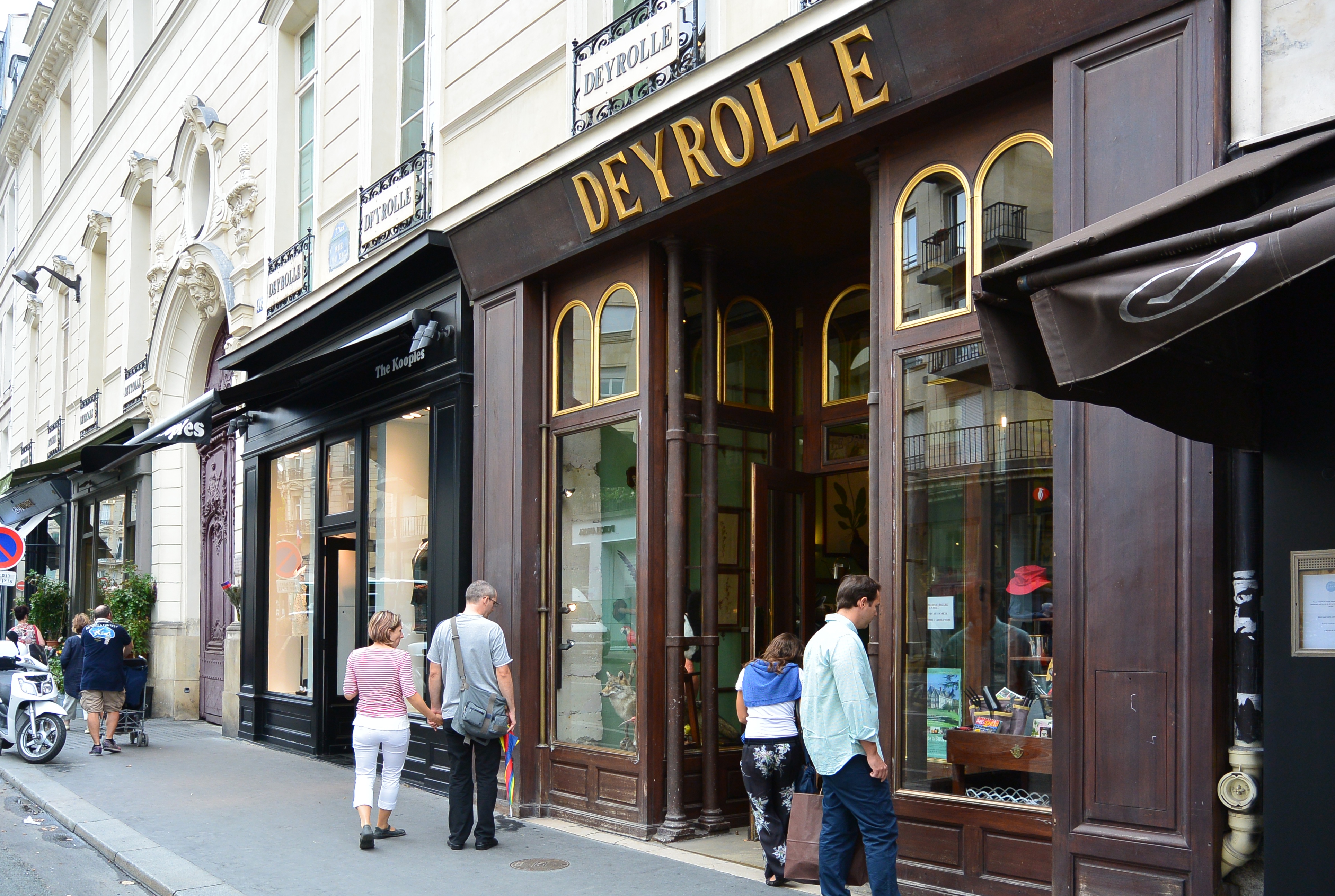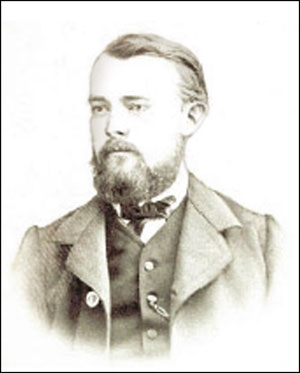|
Achille Deyrolle
Achille Deyrolle (2 October 1813 in Lille – 31 December 1865) was a French entomologist mainly interested in Coleoptera. Born in Lille Deyrolle eventually settled in Brussels where he worked with his father in the City Museum. He went on a scientific mission to Brazil. This lasted five months. During his lifetime Deyrolle amassed a large collection of Coleoptera, but published very little. There is a copy of his manuscript “Liste des Elaterides de Deyrolle Avril 1864” in the Natural History Museum. He owned a taxidermy and natural history shop in Paris, originally owned by his naturalist father, Jean-Baptiste Deyrolle who opened for business in 1831 at 23, Rue de la Monnaie. The business which published natural history books as Deyrolles et fils was later owned by Émile Deyrolle Achille's son. See also * Émile Deyrolle Émile Deyrolle (1838–1917) was a French naturalist and natural history dealer in Paris. The business was originally owned by his naturalist grandfath ... [...More Info...] [...Related Items...] OR: [Wikipedia] [Google] [Baidu] |
Lille
Lille ( , ; nl, Rijsel ; pcd, Lile; vls, Rysel) is a city in the northern part of France, in French Flanders. On the river Deûle, near France's border with Belgium, it is the capital of the Hauts-de-France region, the prefecture of the Nord department, and the main city of the European Metropolis of Lille. The city of Lille proper had a population of 234,475 in 2019 within its small municipal territory of , but together with its French suburbs and exurbs the Lille metropolitan area (French part only), which extends over , had a population of 1,510,079 that same year (Jan. 2019 census), the fourth most populated in France after Paris, Lyon, and Marseille. The city of Lille and 94 suburban French municipalities have formed since 2015 the European Metropolis of Lille, an indirectly elected metropolitan authority now in charge of wider metropolitan issues, with a population of 1,179,050 at the Jan. 2019 census. More broadly, Lille belongs to a vast conurbation formed ... [...More Info...] [...Related Items...] OR: [Wikipedia] [Google] [Baidu] |
Entomology
Entomology () is the scientific study of insects, a branch of zoology. In the past the term "insect" was less specific, and historically the definition of entomology would also include the study of animals in other arthropod groups, such as arachnids, myriapods, and crustaceans. This wider meaning may still be encountered in informal use. Like several of the other fields that are categorized within zoology, entomology is a taxon-based category; any form of scientific study in which there is a focus on insect-related inquiries is, by definition, entomology. Entomology therefore overlaps with a cross-section of topics as diverse as molecular genetics, behavior, neuroscience, biomechanics, biochemistry, systematics, physiology, developmental biology, ecology, morphology, and paleontology. Over 1.3 million insect species have been described, more than two-thirds of all known species. Some insect species date back to around 400 million years ago. They have many kinds of ... [...More Info...] [...Related Items...] OR: [Wikipedia] [Google] [Baidu] |
Coleoptera
Beetles are insects that form the order Coleoptera (), in the superorder Endopterygota. Their front pair of wings are hardened into wing-cases, elytra, distinguishing them from most other insects. The Coleoptera, with about 400,000 described species, is the largest of all orders, constituting almost 40% of described insects and 25% of all known animal life-forms; new species are discovered frequently, with estimates suggesting that there are between 0.9 and 2.1 million total species. Found in almost every habitat except the sea and the polar regions, they interact with their ecosystems in several ways: beetles often feed on plants and fungi, break down animal and plant debris, and eat other invertebrates. Some species are serious agricultural pests, such as the Colorado potato beetle, while others such as Coccinellidae (ladybirds or ladybugs) eat aphids, scale insects, thrips, and other plant-sucking insects that damage crops. Beetles typically have a particularly hard e ... [...More Info...] [...Related Items...] OR: [Wikipedia] [Google] [Baidu] |
Brussels
Brussels (french: Bruxelles or ; nl, Brussel ), officially the Brussels-Capital Region (All text and all but one graphic show the English name as Brussels-Capital Region.) (french: link=no, Région de Bruxelles-Capitale; nl, link=no, Brussels Hoofdstedelijk Gewest), is a region of Belgium comprising 19 municipalities, including the City of Brussels, which is the capital of Belgium. The Brussels-Capital Region is located in the central portion of the country and is a part of both the French Community of Belgium and the Flemish Community, but is separate from the Flemish Region (within which it forms an enclave) and the Walloon Region. Brussels is the most densely populated region in Belgium, and although it has the highest GDP per capita, it has the lowest available income per household. The Brussels Region covers , a relatively small area compared to the two other regions, and has a population of over 1.2 million. The five times larger metropolitan area of Bruss ... [...More Info...] [...Related Items...] OR: [Wikipedia] [Google] [Baidu] |
Brazil
Brazil ( pt, Brasil; ), officially the Federative Republic of Brazil (Portuguese: ), is the largest country in both South America and Latin America. At and with over 217 million people, Brazil is the world's fifth-largest country by area and the List of countries and dependencies by population, seventh most populous. Its capital is Brasília, and List of cities in Brazil by population, its most populous city is São Paulo. The federation is composed of the union of the 26 States of Brazil, states and the Federal District (Brazil), Federal District. It is the largest country to have Portuguese language, Portuguese as an List of territorial entities where Portuguese is an official language, official language and the only one in the Americas; one of the most Multiculturalism, multicultural and ethnically diverse nations, due to over a century of mass Immigration to Brazil, immigration from around the world; and the most populous Catholic Church by country, Roman Catholic-major ... [...More Info...] [...Related Items...] OR: [Wikipedia] [Google] [Baidu] |
Natural History Museum, London
The Natural History Museum in London is a museum that exhibits a vast range of specimens from various segments of natural history. It is one of three major museums on Exhibition Road in South Kensington, the others being the Science Museum and the Victoria and Albert Museum. The Natural History Museum's main frontage, however, is on Cromwell Road. The museum is home to life and earth science specimens comprising some 80 million items within five main collections: botany, entomology, mineralogy, palaeontology and zoology. The museum is a centre of research specialising in taxonomy, identification and conservation. Given the age of the institution, many of the collections have great historical as well as scientific value, such as specimens collected by Charles Darwin. The museum is particularly famous for its exhibition of dinosaur skeletons and ornate architecture—sometimes dubbed a ''cathedral of nature''—both exemplified by the large ''Diplodocus'' cast that dom ... [...More Info...] [...Related Items...] OR: [Wikipedia] [Google] [Baidu] |
Taxidermy
Taxidermy is the art of preserving an animal's body via mounting (over an armature) or stuffing, for the purpose of display or study. Animals are often, but not always, portrayed in a lifelike state. The word ''taxidermy'' describes the process of preserving the animal, but the word is also used to describe the end product, which are called taxidermy mounts or referred to simply as "taxidermy". The word ''taxidermy'' is derived from the Greek words ''taxis'' and ''derma''. ''Taxis'' means "arrangement", and ''derma'' means "skin" (the dermis). The word ''taxidermy'' translates to "arrangement of skin". Taxidermy is practiced primarily on vertebrates ( mammals, birds, fish, reptiles, and less commonly on amphibians) but can also be done to larger insects and arachnids under some circumstances. Taxidermy takes on a number of forms and purposes including hunting trophies and natural history museum displays. Museums use taxidermy as a method to record species, including those ... [...More Info...] [...Related Items...] OR: [Wikipedia] [Google] [Baidu] |
Jean-Baptiste Deyrolle
During the 20th century, Deyrolle was a Parisian institution for natural sciences and pedagogy. It is one of the best known companies of entomology and taxidermy of Paris. Today, Deyrolle is a shop and a cabinet of curiosities open to the public, a reference in the field of taxidermy, entomology and natural sciences, whose vocation is to show the beauty of Nature. Deyrolle is also involved in pedagogy and art. History Since 1831 Deyrolle was created in 1831 by Jean-Baptiste Deyrolle, who was soon succeeded by his son Achille, at 46 rue du Bac in a building constructed in 1697-1699 by Jean-Baptiste Voille for a member of the Bruand family (Libéral Bruand). It was deeply transformed in 1739 by Samuel-Jacques Bernard, son of the banker of Louis XIV, Samuel Bernard (7e arrondissement). Beyond its scientific material, minerals collections, seashells, fossils, mounted animals and prehistoric tools, Deyrolle provides pedagogical charts to schools and universities in France, made ... [...More Info...] [...Related Items...] OR: [Wikipedia] [Google] [Baidu] |
Émile Deyrolle
Émile Deyrolle (1838–1917) was a French naturalist and natural history dealer in Paris. The business was originally owned by his naturalist grandfather, Jean-Baptiste Deyrolle who opened his shop in 1831 at 23, Rue de la Monnaie. Émile’s father Achille Deyrolle ran the business for many years. Émile took over in 1866. The address from 1881 (and now) was (and is) 46, Rue du Bac, the former home of Jacques Samuel Bernhart. Deyrolle specialized in natural history publications and specimens taxidermy, minerals, rocks, fossils, botanical specimens, shells, taxidermy, microscopic specimens and microscopes A microscope () is a laboratory instrument used to examine objects that are too small to be seen by the naked eye. Microscopy is the science of investigating small objects and structures using a microscope. Microscopic means being invisi .... References * Jacques-Marie-Frangile Bigot 1868 ''Guide de l'amateur d'insectes : comprenant les généralités sur ... [...More Info...] [...Related Items...] OR: [Wikipedia] [Google] [Baidu] |
French Entomologists
French (french: français(e), link=no) may refer to: * Something of, from, or related to France ** French language, which originated in France, and its various dialects and accents ** French people, a nation and ethnic group identified with France ** French cuisine, cooking traditions and practices Fortnite French places Arts and media * The French (band), a British rock band * "French" (episode), a live-action episode of ''The Super Mario Bros. Super Show!'' * ''Française'' (film), 2008 * French Stewart (born 1964), American actor Other uses * French (surname), a surname (including a list of people with the name) * French (tunic), a particular type of military jacket or tunic used in the Russian Empire and Soviet Union * French's, an American brand of mustard condiment * French catheter scale, a unit of measurement of diameter * French Defence, a chess opening * French kiss, a type of kiss involving the tongue See also * France (other) * Franch, a surname * Fre ... [...More Info...] [...Related Items...] OR: [Wikipedia] [Google] [Baidu] |
1813 Births
Events January–March * January 18–January 23 – War of 1812: The Battle of Frenchtown is fought in modern-day Monroe, Michigan between the United States and a British and Native American alliance. * January 24 – The Philharmonic Society (later the Royal Philharmonic Society) is founded in London. * January 28 – Jane Austen's ''Pride and Prejudice'' is published anonymously in London. * January 31 – The Assembly of the Year XIII is inaugurated in Buenos Aires. * February – War of 1812 in North America: General William Henry Harrison sends out an expedition to burn the British vessels at Fort Malden by going across Lake Erie via the Bass Islands in sleighs, but the ice is not hard enough, and the expedition returns. * February 3 – Argentine War of Independence: José de San Martín and his Regiment of Mounted Grenadiers gain a largely symbolic victory against a Spanish royalist army in the Battle of San Lorenzo. * Febru ... [...More Info...] [...Related Items...] OR: [Wikipedia] [Google] [Baidu] |






